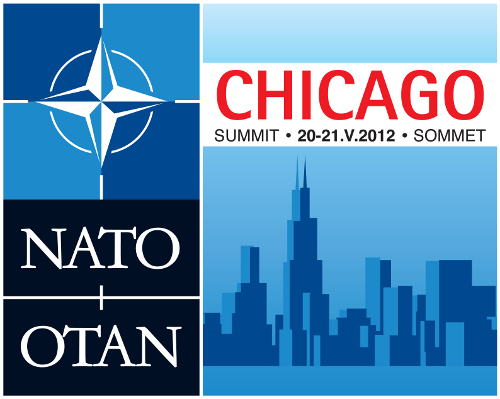
After 64 years, it is time to share the baton of Nato’s leadership with the European Union. What is needed is bold vision of the kind that created the alliance in 1947.
Unfortunately, this is not on tap in Chicago. Which is why the Nato summit will be a missed opportunity to recalibrate the alliance for the 21st century.
A strong and vibrant transatlantic relationship is the bedrock of American foreign policy, with broad bi-partisan support. Yet US leadership of the alliance now chips away at this foundation instead of strengthening it.
For example, American officials regularly berate Europeans for not spending enough on defense even though the charge has no basis in fact. The European Union countries collectively spend around $300bn on their defense, which is what the US defense budget used to be prior to 9/11. It is a lot of money, especially when the Europeans have little interest in patrolling the world.
The real issue is not that the EU does not spend enough on defense; the issue is the funds are spent inefficiently. Multiple redundant armored-vehicle and jet-fighter projects, for instance, rob scarce resources from the production of laser- and GPS-guided weapons that are the mainstay of modern warfare: a shortfall illuminated by the Libyan campaign. To eliminate this wasteful duplication would require painful restructuring of European defense industries with layoffs and cross-border consolidations.
These are politically difficult decisions – just ask any American senator threatened with closure of a defense plant in his or her state. Besides, why should European politicians make such decisions when they have an American defense credit card in their pocket? They know the US will always come in with its hi-tech weaponry to fill in the gaps. As it did in Libya with almost $1bn in assistance.
Nato’s anti-missile plan is another example of a project that has the potential to cause more harm than good for transatlantic relations. In spite of the fact that there is little current evidence that Europeans appear threatened by “rogue” missiles from the Middle East, the US has made this project the centerpiece of its plans for European defense.
Europeans are being wooed into a project of dubious merit by their share of the cost – just $20m a year over 10 years. Some apartments in Paris and London have a greater price tag. No wonder the US Congress has begun to look into the transatlantic cost-sharing arrangement that supports this expensive project.
Yet another charge often levied at the European allies is they have lost their ability to deploy hard power. Not true. Over the last decade the European Union has deployed over 80,000 soldiers, sailors, airmen, lawyers, and consultants, through 27 missions from Aceh in Indonesia to Chad in central Africa, where a battle-ready EU brigade fought well-armed mercenary soldiers for 19 months to prepare the way for a United Nations peacekeeping force.
Or consider the EU anti-piracy naval force off Somalia which is twice the size of Nato’s and demonstrates one of the EU’s unique assets. The EU’s naval force turns over pirates captured by its ships to African countries for prosecution, Nato’s ships lets the pirates go free because unlike the EU, Nato cannot sign treaties to facilitate pirate transfers.
Clearly, the Europeans can afford to pay for the defense they need, and, given the opportunity, are competent enough to develop it. But they have never been given the chance to flex their own muscles independently of the US. The EU, for instance, has not been allowed (mainly because of US and UK objections) to set up a permanent military headquarters for its missions.
Given the economic turmoil on both sides of the Atlantic, the absence of a serious threat to Europe’s security, and America’s growing focus in Asia, the existing transatlantic defense arrangement should be revised. Europeans should be primarily responsible for their own security and that of their periphery. The US and Canada would join forces with the EU for all other operations that impinge on all of their national interests.
One way to handle this division of labor would be to bridge Nato’s crown jewel: its military command structure that enables the allies to fight together to the EU’s common security and defense policy. This arrangement will allow Europeans (26 of 28 Nato members) to use Nato, yet keep the North American side of the partnership involved for the time when the US is really needed. The division of responsibility will also force the Europeans to restructure their defense spending and make it more efficient.
Far-sighted European and North American leadership created an Alliance that has served western security interests for six decades. It is time for similar visionary leadership to recalibrate Nato for the new century.
Sarwar Kashmeri is a senior fellow with the Atlantic Council’s International Security Program. This essay was first published by The Guardian, and is part of a series of New Atlanticist pieces on NATO’s 2012 Chicago Summit.
Image: NATO-Chicago-Summit-Logo.jpg
